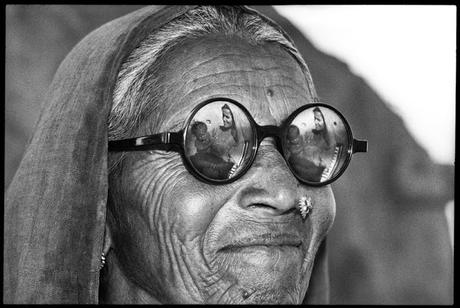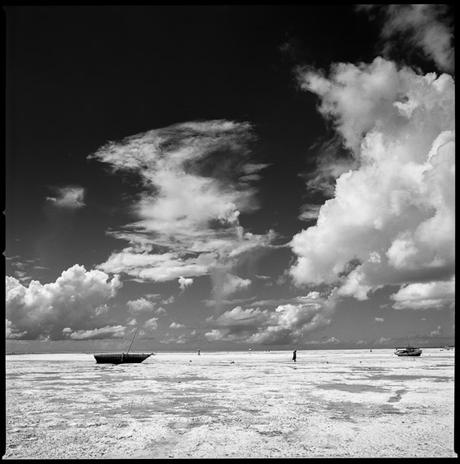Klaus is master of his craft who is widely recognized for his introspective photography and subjects of his works ranging from the common man, to the Dalai Lama, the Pope and many other high-profile people.
I have admired his work as a student of photography and have now become a bigger fan of the man behind the camera after speaking to him. These are a few of his photography -and life- nuggets he shared with me:

Three Generations (C) Klaus Polkowski - The cornerstone photo of his career
When did you know you wanted to take photographs for a living?
"In 1990 when I was working in Calcutta, after finishing my studies in Berlin around the age of 22, English photographer Gary Woods put a Hasselblad in front of me at a bar. We then started to talk. He was in Calcutta to do a report about Mother Theresa but didn’t have a permit to take pictures at “The House of the Dying,” so he asked me to take photos for him. I shot five film rolls and gave them back to Gary. Two months later I received a call because my pictures were in a book and I was invited to London. I stayed in London for 10 days, where I was shown all the photography techniques in the dark room. That's when I started taking serious pictures."
When did you start selling your work?
"In 1993/1994 I starting selling my photographs at the flea market. I sold each print for $50. In two days I sold two-thousand dollars."What motivates you to continue with photography?
"I have never been motivated by money. The most important thing to me is to take a perfect picture and print. Only when I can feel that the soul is in the picture, is my photograph ready to sell or give to my clients."
What has been your most memorable assignment?
"There isn’t one big project, but there are several little ones."Can you walk me through your process:
"Emotional situations are sometimes more important when done in families. First I talk to people, then I might live in the village, then I takes pictures. I let the situation happen. I like to be an invisible photographer and take photographs while people do what they normally do. I don't want to be 'the photographer,' I become a member of the family. I just take “simple pictures.” It's not important to me to shoot a “wow-wow” picture. It's the little things, like the people's eyes, that makes them feel human instead of just being a subject of a photo."
"I'm a slow photographer, when others might take hundreds of the same scene (or person), I only take one to five photos when I have a “feeling.”
What makes a great photo?
"What makes a photograph beautiful is when it captures (the subject's) truth, authenticity and how they are."How can you tell/how do you tell a story with a photo?
"When I don't take pictures of people, I just takes photos of landscapes; because that is the right moment, angle and light...like a dream in that moment. I'm not a writer, but I can see and feel how the world looks. My pictures are like a letter to somebody."
What have you learned from photographing others?
"To trust people and to create an element of trust. After so many photo shoots I'm still in contact with the people I photograph. But the most important thing I have learned is communication."
What have you learned about yourself with photography?
"Taking photos is like meditation to me. Taking pictures is freedom and it's the greatest thing to take pictures. Although I couldn't do anything else, I have learned to take care of people when they are in front of the camera. I make other people feel safe and help them by taking photos. I'm part psychiatrist because of the conversations that happen when I'm taking photo's and my ability to work with people."
Do you still take film photos?
"I use a Hasselblad film camera. I also use a darkroom to develop my own film rolls and make my own prints on Ilford museum-quality paper."Why do you still use a darkroom?
"To be in the darkroom and develop photos has the same significance to me as going to church."Where can we see or purchase your work?
"30 years of my work - the essence of my work - you can see on my website. It's important that everyone can afford my work, so I sell digital prints ($60-100), or postcards ($2). You can also purchase limited-edition museum-quality prints ($1,200 each)."
What do you tell people, like myself, that are passionate about photography?
"You have to take pictures for years. It's important to find your own way and learn what do you want to do with your pictures. Ask yourself: why do you take pictures and what feeling do you want to convey with your pictures."
"But the most important thing is that you have to want it. Not a little. Not half. You have to want to take pictures. If you get a 'tickling in your soloflex (gutt),' you're a good photographer."

(C) Klaus Polkowski
Klaus has graciously sent me a collection of his postcards and has invited me to giveaway a set to my readers so you too can enjoy the beauty of his photography at home.
a Rafflecopter giveaway
Ana Lydia

